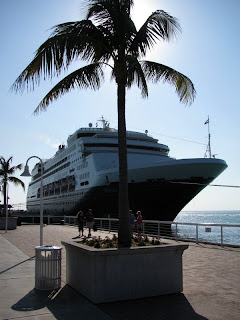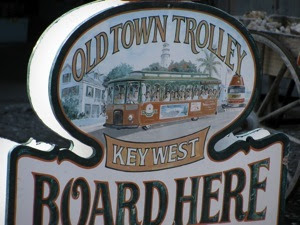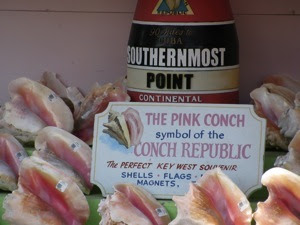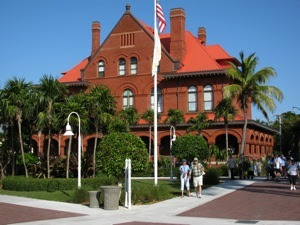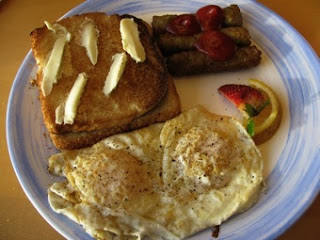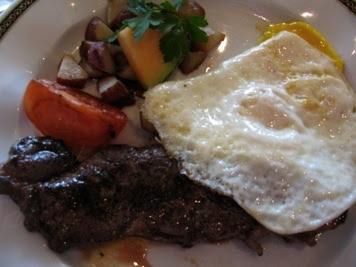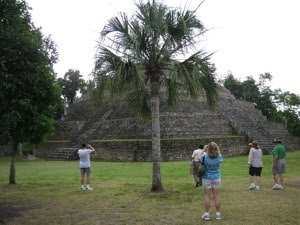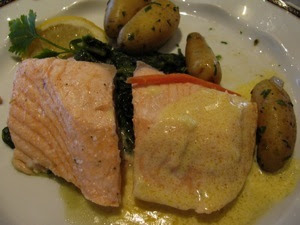BEFORE, DURING AND AFTER
THE 2010 RYNDAM CRUISE
Preface: A combination of factors led to this venture. First a good cruise offer on a Holland American cruise to Belize, Honduras and Mexico that was too good to refuse. Our seven-day cruise was on sale for $499 and was sweetened with a $150 per cabin ship board credit. Secondly, we could travel in January and escape the frigid weather of Minnesota. Thirdly, and equally important, we could visit with our dear friends the Andersons in Tampa both before and after the cruise. Fourthly, the McLeans and Wulffs could share gasoline costs to keep down transportation costs. Also, because of the Obama recession, bargains could be had from hotels.
So, on Tuesday, January 12, we departed snow-clad New Ulm and headed down US 14 to I35 and Hannibal, Missouri for our first night lodging. Wednesday, we reached Nashville; Thursday, Tifton, Georgia; and Friday our destination Tampa. We unloaded at the Quality Inn and headed for the Land of Lakes. Yes, those are our snow tunnels on the right.
These birds greeted us at the Anderson's house.
Dorothy and Orrie Anderson were waiting for us and they treated us to a fantastic spaghetti dinner.
Dorothy made one of her good ol pecan pies for dessert.
Dorothy’s lovely sister-in-law joined us.
Our evening was spent reminiscing about old times. Saturday we were treated to flounder.
Saturday we had more visiting time. Sunday morning we followed Orrie’s car to the Shepherd of the Lakes Lutheran Church. Since it was communion Sunday, we arrived at church early for this pre-service observance.
The congregation was quite small and friendly. The church service included a children’s session and two small children interacted to Pastor Huebner’s comments.
They served coffee and donuts, but we had to leave early to make our way to the docking area, to take care of parking at the cruise terminal and check in with Holland America. By the time we entered our side-by-side staterooms (776 and 778), the Viking-Cowboy playoff game was at half time. Fred skipped lunch to watch the last half at the Sportsmen Lounge. Vikings won handily!
At 5 pm the Ryndam left Port Miami and set out to sea.
Mike contemplated the menu.
Annette chose clams for starters.
But left the shells.
The destination for our first day at sea was Key West, the southernmost point in the continental United States.
The tiny island, just two miles by four miles, can be easily navigated on foot or bicycle, but the Old Town Trolley is popular.
Since Fred had ordered and prepaid tickets on his computer at home, all we had to do was find the trolley station at nearby Mallory Square and present a printout.
The full tour took 90 minutes for us who stayed on board. We started at the Sponge Market and made our way through the neighborhood that President Truman had visited so often.
Once a second home to Harry S. Truman, the Little White House is a part of America’s political and historical past. It was built in the late 1800s as an officer’s quarters for the Navy, but soon became the winter home of Truman and his family. Truman had such a deep affection for the island that he spent many days here—and as a result the Little White House became an arena for political meetings and
many important events. John F. Kennedy, Dwight Eisenhower, Jimmy Carter and other prestigious leaders visited over the years and allured by the home and its tropical setting.
We passed the original Sloppy Joe’s Bar (now Capt. Tom’s Saloon) where Ernest Hemingway, a heavy drinker, frequented regularly during the winters of the 1930s.
Our trolley passed his former home, but all I could capture from my seat was the stone wall around his estate.
A little further along we came across the oldest Methodist Church in Key West, which attracted the attention of Irma and Mike.
Our trolley driver then drove us out around the coastline so view some of the man-made land additions. I took a picture of Mike and Irma as they surveyed the landscape.
Finally our driver took us to the southernmost point in the continental United States
... and the nearby termination of US Highway 1.
Our tour ended at Mallory Square where we had begun. Fred ambled over to an outdoor art exhibit that featured the “Shipwreck Monument”.
A good deal of the early history here revolved around shipwrecks and the salvage industry.
We began our short walk along the waterfront towards the docked Ryndam. A wino rested nearby as we moved along.
I took one last photo of the Old Custom House (now a museum).
Just before boarding the ship, we were attracted by an alligator who seemed eager to pose with Irma, Mike and Annette.
The alligator is the 3rd one from the left.
Once back at the ship we went though the security check and present our room cards.
And refreshed ourselves.
Tuesday morning we had breakfast on the Lido deck.
Our cruise ship was traveling just north of Cuba.
Fred went out on deck to capture the morning sunrise over Cuba.
Among the many activities offered by the Ryndam were the Digital Workshops by Microsoft. Lessons were free and computers were accessible for hands on learning.
Ann treated herself afterwards with an Ice cream cone on the Lido Deck.
Our tables on the Lido were always graced with fresh orchids.
At 8 am on Wednesday we arrived at the port of Belize City. The longest barrier reef in the Western Hemisphere fringes Belize City, which makes snorkeling and scuba diving extremely popular here. Recreational pursuits are popular, ranging from inner-tube trips down a jungle river to zip-line tours amid the treetops of a rain forest. Other excursions departing from the Central American city visit Mayan ruins, wildlife preserves and botanical gardens. Temperatures between 70-80. Lonely Planet says best time to visit is January because weather is cooler and less rainfall. Frommer’s Cruises & Ports of Call 2000 -- Coming Ashore:
Because of the shallow port waters, we had to rely on tenders. These shuttle ships were provided by the port city. Since they were quite large, passengers could be expedited easily. The trip to land took about fifteen minutes. We arrived in a multi-million dollar pier called the Fort Street Tourism Village. This was basically a huge tourist shopping mall.
We walked through the shops to reach the main street outside. Many horse-drawn carriages were available for hire to take us around the historic harbor district shown on the map.
We negotiated a rig for ten dollars apiece. The awning gave us shade from the hot sun and the ride was easy on the feet. We pretty much governed what I had on my lesson plans. The driver spoke very good English and earned a tip.
We were in the historic district and just ahead of us was the Baron Bliss Park and Lighthouse.
Henry Edward Ernest Victor Bliss, commonly known as Baron Bliss (16 February 1869 – 9 March 1926), was a British-born traveler who willed some two million US dollars to a trust fund for the benefit of the citizens of what was then the colony of British Honduras, now Belize. The Bliss Institute (a performing arts centre that was previously a museum, research centre, and library in Belize City) was part of the benefits from this endowment, as were the city's Bliss Lighthouse (where Bliss's tomb is located), the Bliss School of Nursing, and various other medical facilities around the country. Belize celebrates Baron Bliss Day each March 9 in his honor.
Bliss's early personal history as well as the origin of his "Baron" title is uncertain. He styled himself "Fourth Baron Bliss of the Kingdom of Portugal"; there is some speculation that the original Portuguese title was Barão de Barreto. He was born into a wealthy Suffolk family and rumored to have been disinherited for keeping a hansom cab waiting. He subsequently made a substantial fortune speculating in petroleum shares. Unfortunately he contracted polio and decided to travel the world in a luxury yacht. After spells in the Bahamas, Trinidad and Jamaica, he arrived in Belize harbor, where he found a climate which suited him. He was extremely fond of the local people, and despite the fact that because of his physical infirmity he never set foot on Belizean soil, he bequeathed the bulk of his fortune for the benefit of the people of British Honduras (Belize).
In the Baron Bliss Park and Fort area were some beautifully restored colonial structures. The first had been a large hospital. but now used as a hotel.
The second was part of the Fort complex.
As we continued our swing around the historic district , we saw a number of foreign embassies and some private schools, both Catholic and Baptists.
These schools were popular for parents who wanted quality education for their children. As throughout Latin American countries and the Caribbean, school uniforms were the norm.
Even though the historic district was generally well maintained, there were pockets of less well taken care of property, as this dwelling to the right.
Of course there were people walking around to draw attention to themselves in hopes of collecting tips from us tourists.
We finished our tour and paid the driver his fare plus tips. After walking through the tourist complex, we boarded our water shuttle and headed back out toward the ship. As we left the harbor we had a nice view of the historic lighthouse we had just visited.
Once out of the harbor, the water became a little more choppy.
When we pulled up along side the Ryndam, assistance was need to exit the ship. In this photo Annette is not greeting the aide with a handshake, but is reaching out for a steady hand.
We were now back to our luxury accommodations and pampered treatment. Our table 123 had been reserved again for dinner.
Annette ordered crab legs for starters.
After dinner the four of us went over to the Main Lounge for the 7 pm Show Time featuring “Street Songs”. Flash photography and videotaping were forbidden, but I managed to take some photos with the existing light,
Meanwhile the ship was making its way southward from Belize to the Isles of La Bahia (Bay Islands) and Roatan in Honduras.
Thursday morning, around 7 am, we reached Roatan in Honduras.
However, the water was so rough that the captain delayed docking until it was feasible to do so.
Since we had extra time, our choice for breakfast dinning was the formal Rotterdam Dining Room. Mike and I ordered the steak and eggs breakfast from the menu.
The ship shuttered and vibrated intensely as we backed into the berthing spot on the dock. Eating breakfast was a little easier once the ship had been secured to the dock.
We limited ourselves to the modern waterfront cruise village built by Royal Caribbean Cruise line to serve all cruise lines. We walked into the tourist center and boarded a Disney like air lift that carried us over to Mahogany Beach.
As we soared along we could get a nice view of the jungle.
A rusty shipwreck lodged in the harbor.
Mahogany Beach was a beautiful sandy beach area.
Free use of reclining lawn chairs enticed those of us who desired to sit in the shade of palm trees. The setting was ideal for those who enjoyed relaxing in an exotic setting.
After our beach time activity we headed back to the Ryndam.
The evening Show Time featured some very gifted string performers.
Their beautiful music prompted a standing ovation.
At 7 am Friday morning we arrived at Costa Maya, Mexico. As in the other port cities, we did not buy excursions from Holland America because they were overpriced. The Native Choice Tour offered by the cruise line was $109 per person, but I pre-ordered and prepaid our tickets direct with the tour company for $70 per person. Hence we saved $39 each -- for the same tour. We were to meet with our guide one hour after docking, but we were over 30 minutes late. The guide and group were very patient with us. Our guide was Cathy, a Canadian who moved here because she was entranced by Mayan civilization so much in evidence at Costa Maya.
Our wonderful guide, Cathy
Cathy passed out bottled water and we set out in our white tour van for the long trek to the Chacchoben ruins. The tour of the ruins and a Mayan home would take over 5 hours.
As we headed out to the countryside our vehicle was stopped by ecology security personal armed with automatic weapons. Their search of cars was very thorough as they looked for evidence that plants or animals were being transported. But, the guards knew Cathy and waved us through.
In 1972, Dr. Peter Harrison, an American Archeologist leading a project from Tulane University, made the first professional exploration, the first maps of Chacchoben and officially reported it to the Mexican Government. The first human settlements in the area of Chacchoben, have been dated as early as 1000 BC. Evidence collected during the excavations shows that most of the structures restored were built around the year 300-360 AD and were modified up to five times during the occupation period.
When we arrived at the site we were greeted by a Mayan guide whose ancient relatives had built the magnificent monuments. He then led us down a pathway to a temple referred to as Edificio 24.
It had been magnificently restored to its original appearance.
We walked around to Plaza B that fronted the temple. Here ceremonies had taken place.
From here we walked around the center of the complex where residents had lived and many “lower ruins” existed.
Our tour culminated with the Gran Basamento which consisted of a huge base sided with steps that led to a platform which held privilege dwellings and Temple 1.
Some climbed the steps to the platform while others rested in the shade below.
We piled back into our tour van and headed to a Mayan home in Chacchoben Village to experience the culture. We entered via a flower studded entrance way and were led to the home of our hosts.
One of our major objectives was to learn about the food used by the Mayas and the food preparation process.
... and making our own tortillas.
The climax of our visit was sitting down and eating a typical Mayan dinner. Chicken was usually added for special occasions.
When we returned to the ship we had dinner in the Rotterdam Dining Room and sat with good Canadian friends that we had met on our tour of the day.
Fred ordered his favorite -- poached salmon.
Saturday we were at sea. This was the last day of our cruise and reserved Table 123 in the Rotterdam Dinning Room for our evening meal. Everyone donned chef hats for dinner and the waiters put on a little table napkin performance.
Even the salad was special.
Our ship pulled into the Port of Tampa around 7 am Sunday. We had plenty of time as we waited in our stateroom for the our departure color to be announced. Once on shore, Fred walked over to the parking ramp and picked up our green van. We drove to the Andersons and together with them we attended Sunday services at Shepherd of the Lakes Lutheran Church. After church we took the Andersons out for lunch at the Village Inn.
That night we watched the Minnesota Vikings in their playoff game with the New Orleans Saints. The good team lost. We bid farewell to the Andersons and headed to the nearby Garland Motel in Land Of Lakes for a good night rest.
Monday morning we set out northward on US 41 for our long trip to the Northland. We did not reverse our route home but skirted westward on the Florida Panhandle to Dustin for a visit with good friends from Minnesota who were snow-birding.
We checked in at the Inn on Dustin Harbor early enough Monday afternoon to visit. The motel was very nice. Fred found a half price special for this stay on the computer -- $70 room for $35 which included a nice breakfast. We carried our bags to the room and readied ourselves for an evening meal with Julius and Lorraine Ingebritson, Lorraine’s sisters Barbara and Margaret.
And then back to New Ulm, MN












